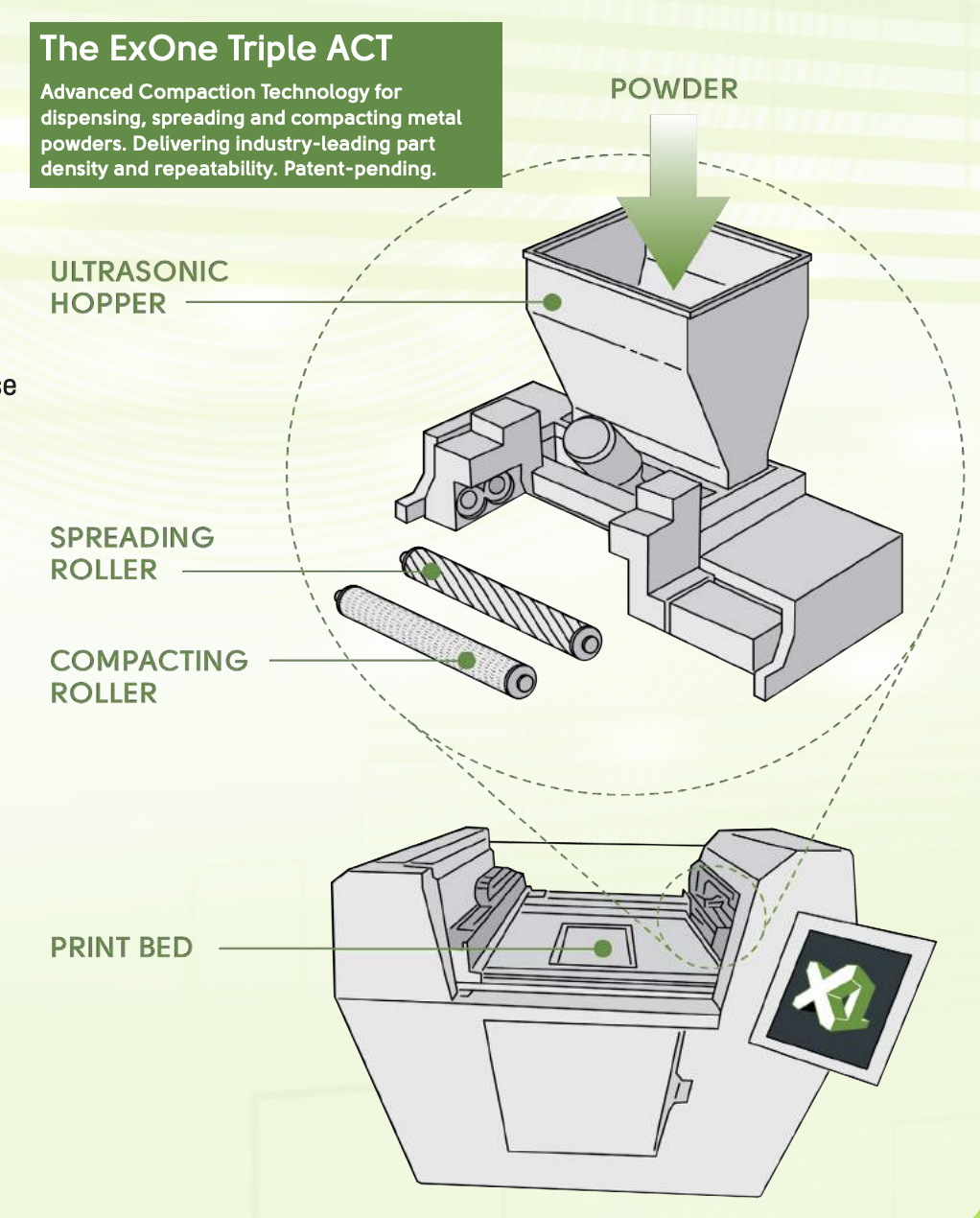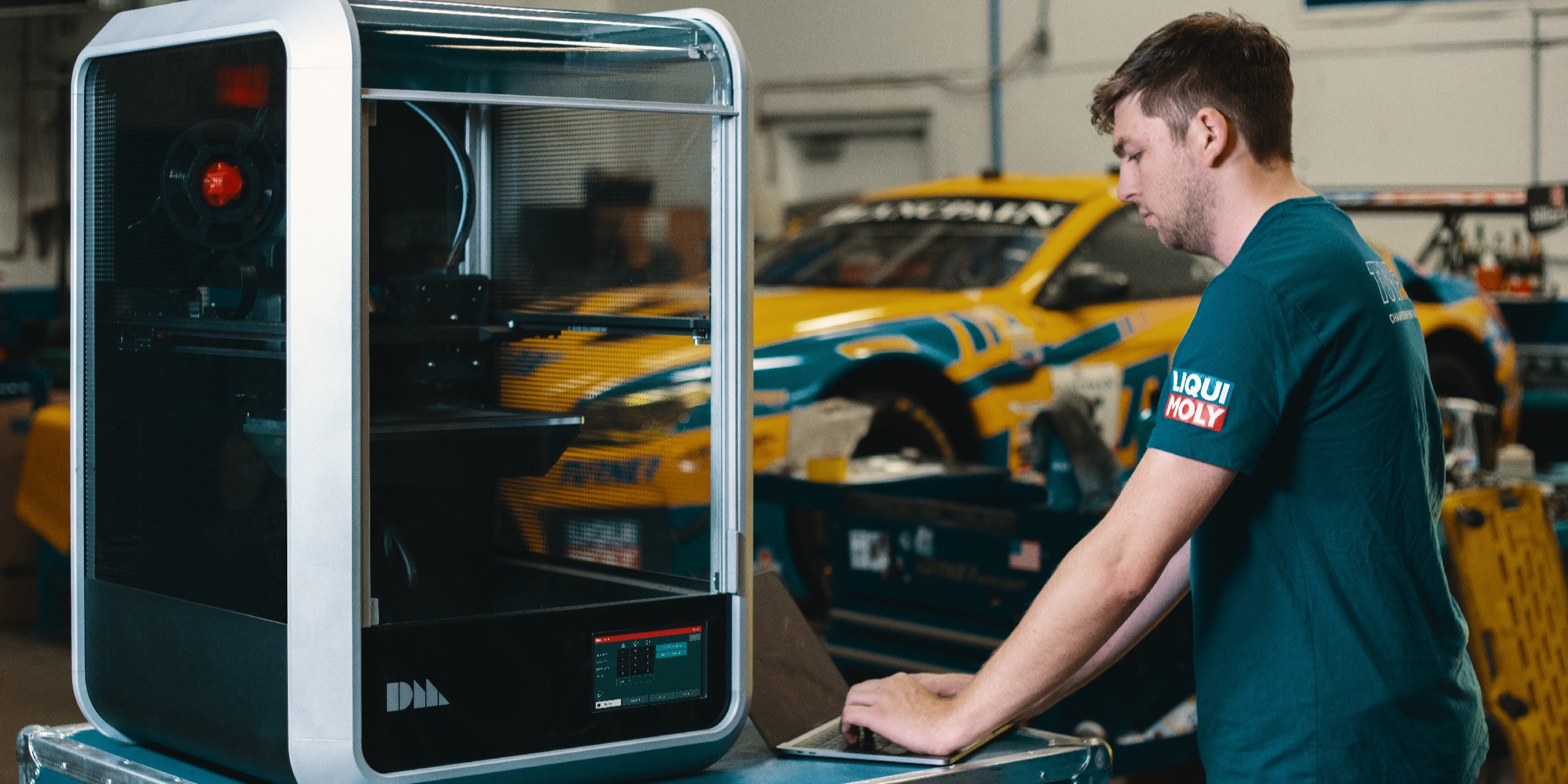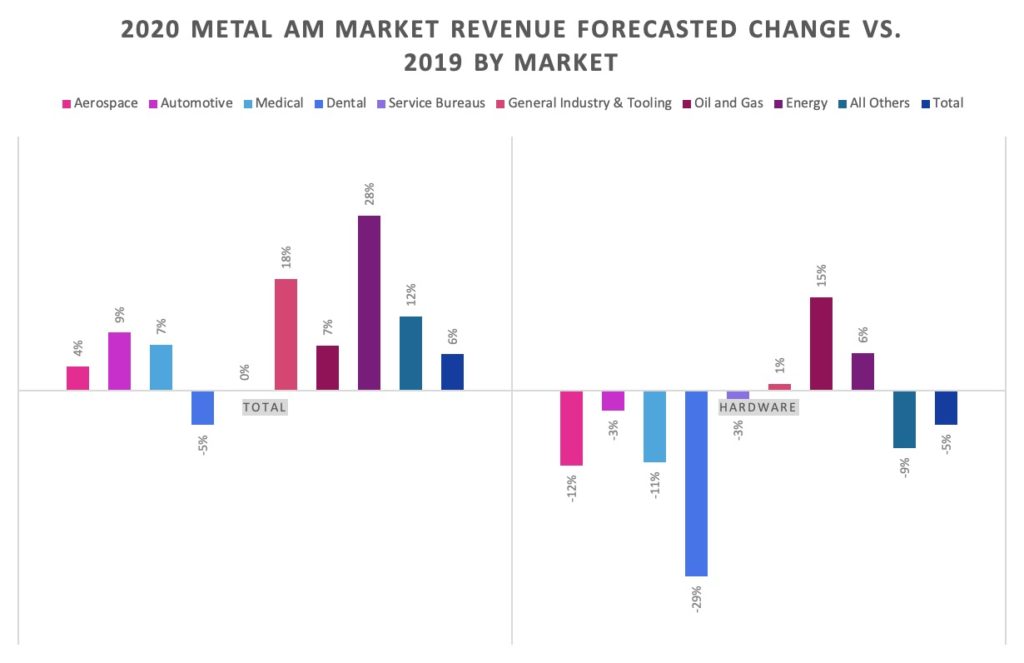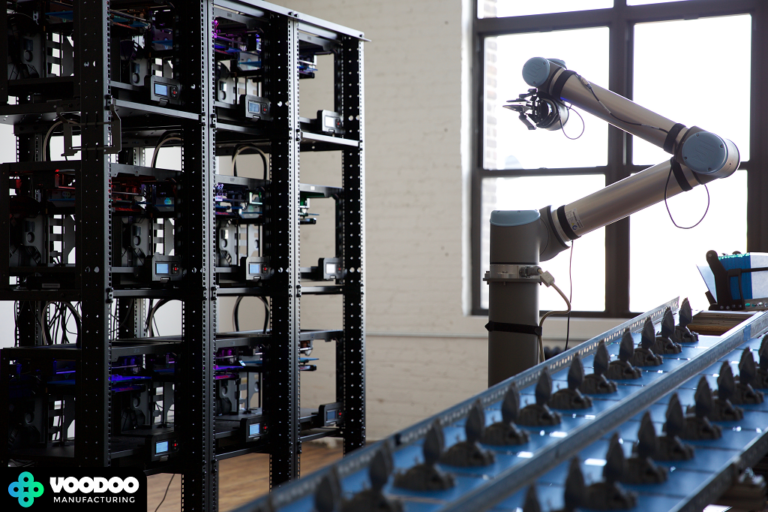3D Printing News Briefs, August 30, 2020: Roboze, BCN3D & CREA3D, 3D Systems, ASTM International
We’re covering 3D printing business stories in today’s 3D Printing News Briefs, including investments, partnerships, industry executives, and annual reports. Federico Faggin, who invented the microprocessor, is investing in Roboze, and BCN3D is partnering with CREA3D. 3D Systems has named its new CFO. Finally, ASTM International’s Additive Manufacturing Center of Excellence has released its second annual report.
Microprocessor Inventor Invests in Roboze
Italian-American 3D printer manufacturer Roboze has announced that physicist Federico Faggin, the inventor of the microprocessor and co-inventor of both the touchpad and touchscreen, is investing in the company, which designs and produces industrial 3D printers for the production of functional thermoplastic and carbon fiber reinforced parts. Additionally, the prolific inventor will be joining the company’s Advisory Board as a technological consultant. Born in Italy but a naturalized US citizen, Faggin has helped shape modern computer science and won multiple international awards for his efforts, including the United States of America’s National Medal of Technology and Innovation. As a member of the Roboze Advisory Board, he will help the company as it works to increase the development of additive manufacturing solutions.
“A few years ago I met Alessio Lorusso and I recognized in him an exceptional foresight and remarkable creative and organizational skills. With great enthusiasm, I therefore accepted his offer to be part of the ROBOZE Advisory Board,” Eng. Faggin said. “I am proud to see an Italian company that knows how to compete in the global economy with cutting-edge products in such a demanding sector and I am pleased to make my experience available so that ROBOZE can grow as it deserves.”
BCN3D and CREA3D Announce Distribution Partnership
 Speaking of Italy, Barcelona-based BCN3D Technologies has announced a distribution agreement with Italian 3D printer distributor CREA3D in order to increase growth in Italy’s 3D printing market. CREA3D has been providing professional 3D printing solutions through both B2B and B2C channels since 2013, and has created a strong online and offline presence for itself. Now, professionals in Italy will benefit from CREA’s distribution of BCN3D’s 3D printer portfolio, made up of the desktop BCN3D Sigma and Sigmax and the professional BCN3D Epsilon system, all of which offer a higher volume of printing per piece due to the company’s Independent Dual Extruder (IDEX) technology.
Speaking of Italy, Barcelona-based BCN3D Technologies has announced a distribution agreement with Italian 3D printer distributor CREA3D in order to increase growth in Italy’s 3D printing market. CREA3D has been providing professional 3D printing solutions through both B2B and B2C channels since 2013, and has created a strong online and offline presence for itself. Now, professionals in Italy will benefit from CREA’s distribution of BCN3D’s 3D printer portfolio, made up of the desktop BCN3D Sigma and Sigmax and the professional BCN3D Epsilon system, all of which offer a higher volume of printing per piece due to the company’s Independent Dual Extruder (IDEX) technology.
“We are pleased to cooperate with CREA3D, an alliance which will support us in increasing the sales in the Italian market, where there is a high potential for the IDEX system and the distinctive duplication, mirror and multi material printing modes,” BCN3D’s CEO Xavier Martínez Faneca said. “Their considerable experience in additive manufacturing, combined with a top-quality technical know-how makes CREA3D the right fit to help us grow and serve Italian customers in the best possible way.”
3D Systems Appoints New Chief Financial Officer
 3D Systems has announced that Jagtar Narula, the current SVP of Corporate Strategy and Business Development for Blackbaud Corporation, will be joining the company as its Executive Vice President and CFO. Beginning September 14th, Narula, who has nearly 30 years of progressive financial, business leadership, and investment strategy experience under his belt, will report to Dr. Jeffrey Graves, the company’s President and CEO. He will lead the Finance organization for 3D Systems, which includes all investor relations, finance operations, and capital deployment for growth and margin expansion.
3D Systems has announced that Jagtar Narula, the current SVP of Corporate Strategy and Business Development for Blackbaud Corporation, will be joining the company as its Executive Vice President and CFO. Beginning September 14th, Narula, who has nearly 30 years of progressive financial, business leadership, and investment strategy experience under his belt, will report to Dr. Jeffrey Graves, the company’s President and CEO. He will lead the Finance organization for 3D Systems, which includes all investor relations, finance operations, and capital deployment for growth and margin expansion.
“I am excited to have a leader of Jagtar’s experience join our team at such an important time for our company. Jagtar’s experience in leading technology companies with complex transformations and large-scale efficiency improvements will be invaluable as we transition to our new focus, align our organization and cost structure to our current revenues, and position ourselves for sustained growth and profitability in the years ahead,” stated Dr. Graves. “I want to add a special note of thanks to Wayne Pensky for serving as our Interim CFO, allowing us to move quickly to restructure the business and prepare for an exciting future ahead. Wayne will support Jagtar to ensure a smooth transition in Finance leadership for the company.”
ASTM International’s AM CoE Issues Second Annual Report
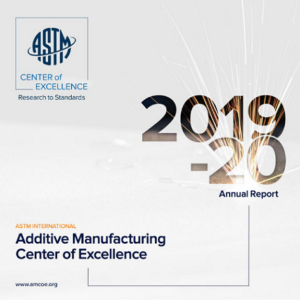 ASTM International’s Additive Manufacturing Center of Excellence (AM CoE), which was launched in 2018, has just debuted its second annual report. In addition to offering a look at future plans, the report also includes many of the AM CoE’s accomplishments over the past year, such as the creation of an international conference, in-kind investments, new additive manufacturing staff, the new AM guide for supporting COVID-19 supply chains, a technical workshop series, the development of certificate courses, and more.
ASTM International’s Additive Manufacturing Center of Excellence (AM CoE), which was launched in 2018, has just debuted its second annual report. In addition to offering a look at future plans, the report also includes many of the AM CoE’s accomplishments over the past year, such as the creation of an international conference, in-kind investments, new additive manufacturing staff, the new AM guide for supporting COVID-19 supply chains, a technical workshop series, the development of certificate courses, and more.
“Together, the AM CoE and its partners supported the advancement of AM technology through investments in new R&D projects, existing infrastructures, development of new educational offerings/partnerships, expansion of the AM team, and the growth of the center’s global footprint. The hard work and dedication of the center’s team are highlighted in this comprehensive report,” said Mohsen Seifi, PhD, ASTM International’s Director of Global Additive Manufacturing Programs.
Seifi also said that the AM CoE has “emphasized its commitment” to speeding up usage and capabilities of evolving technologies, like additive manufacturing, and empowering innovation in manufacturing.
The post 3D Printing News Briefs, August 30, 2020: Roboze, BCN3D & CREA3D, 3D Systems, ASTM International appeared first on 3DPrint.com | The Voice of 3D Printing / Additive Manufacturing.
ExOne to Partner with Xometry to Offer Metal Binder Jetting
The ExOne Company, manufacturer of sand and metal 3D printers for binder jetting technology, has announced that they will be partnering with Xometry—known for its custom manufacturing marketplace in the US. Centering around metal additive manufacturing processes, ExOne will be the sole provider for binder jetting in this new partnership.
Xometry customers will be able to benefit from ExOne’s 20 years in 3D printing and the refinements it has made with “triple advanced compaction technology” and ultrasonic dispensing (illustrated below)—allowing for better accuracy and performance in parts. Some of the greatest benefits in 3D printing are offered with binder jetting from ExOne, including affordability and speed in production as one roller evenly spreads powder, and another compacts it for the proper density. With a bonding agent deposited onto a thin layer of the powder, the process is repeated over and over until the 3D printed structure is made.
ExOne can print over 20 materials currently, including the following:
- 316L stainless steel
- 17-4PH stainless steel
- Inconel 718
- M2 tool steel
“ExOne is proud to offer our metal 3D printing services to Xometry customers,” said John Hartner, ExOne’s CEO. “Our industrial binder jet machines can truly take products from prototyping all the way to final production with a single process that is fast, affordable and sustainable.”
This type of partnership marks the accelerated trend not only in the use of metal but in evolving past rapid prototyping to using AM processes for functional parts in many different industrial applications. Metal binder jetting continues to grow in popularity too due to the ability to make strong but lightweight parts like metal casting molds and cores, and innovative tooling solutions from a variety of materials; meanwhile Xometry is able to offer customizations through a vast network which relies not only on 3D printing technology, but also traditional processes like CNC machining, injection molding, die casting, and more. Currently they customize and produce parts for companies like BMW, Dell, NASA, and GE.
“We’re excited to offer binder jetting to expand the range of services our customers can get from Xometry’s new Digital RFQ Marketplace,” said Randy Altschuler, Xometry’s CEO. “ExOne is a true innovator in additive manufacturing and we believe this partnership is a big win for our customers.”
ExOne has continued to show dropping revenues despite their international standing as a leader in binder jet 3D printing technology. Amidst employee layoffs, their second-quarter earnings report showed a year-on-year revenue decrease of 27%.
As was the case with businesses of all types and of all sizes this year, COVID-19 has wreaked havoc on finances. Employee furloughs and pay cuts have also been instituted in efforts to cut the ExOne budget, although the Pennsylvania-headquartered company expects revenues to be rising in the future as interest in 3D printing technology for the industrial front continues to accelerate.
Xometry’s financing rounds have been promising, however, with another $50MM raised last year—bringing overall funding to $113MM for the Maryland manufacturing startup. They plan to invest in further product development and global expansion, along with other “growth initiatives” with the substantial funds currently at their disposal.
[Source / Images: Xometry]
The post ExOne to Partner with Xometry to Offer Metal Binder Jetting appeared first on 3DPrint.com | The Voice of 3D Printing / Additive Manufacturing.
HP shares rise by four percent following strong Q3 2020 revenue results
3D Printing Unicorn Desktop Metal to Go Public After Reverse Merger Deal
After becoming one of the fastest-growing 3D printing startups, Desktop Metal announced plans to go public following a reverse merger deal with blank check company Trine Acquisitions. The Boston-based metal 3D printing systems manufacturer revealed that the combined companies will be listed on the New York Stock Exchange (NYSE) under the ticker symbol “DM” and are expected to have an estimated post-transaction equity value of up to $2.5 billion.
2020 has seen a surge of company’s opting to go public through special purpose acquisition company (SPAC) merger deals. During the first half of the year, there have been 79 SPAC IPOs that have raised gross proceeds of $32 billion, according to SPACInsider, a sharp increase from last year’s 59 SPAC IPO’s and gross proceeds of $13.6 billion. In fact, Desktop Metal follows in the steps of space tourism startup Virgin Galactic and electric car maker Nikola Corp, drawn to SPAC listings to go public without the risk and complexity of a traditional IPO.
Since coming out of stealth mode in 2017, Desktop Metal has managed to raise over $438 million in funding, becoming one of the fastest companies in US history to achieve unicorn status. Claiming to reinvent the way design and manufacturing teams 3D print metal and continuous carbon fiber parts, the company aims to create the world’s fastest metal 3D printers. Its broad product portfolio already includes an office-friendly metal 3D printing system for low volume production, as well as new mid-volume manufacturing and continuous fiber composite printers, both of which are expected to ship in the fourth quarter of 2020.
With a valuation of $1.5 billion, Desktop Metal is the first major Massachusetts-based 3D printing company to go public. Locally, Desktop Metal competitors include fellow 3D printing technology unicorn Formlabs in Somerville and continuous carbon fiber manufacturing company Markforged in Watertown.
“We are at a major inflection point in the adoption of additive manufacturing, and Desktop Metal is leading the way in this transformation,” said Ric Fulop, Co-founder, Chairman, and CEO of Desktop Metal. “Our solutions are designed for both massive throughput and ease of use, enabling organizations of all sizes to make parts faster, more cost effectively, and with higher levels of complexity and sustainability than ever before. We are energized to make our debut as a publicly traded company and begin our partnership with Trine, which will provide the resources to accelerate our go-to-market efforts and enhance our relentless efforts in R&D.”
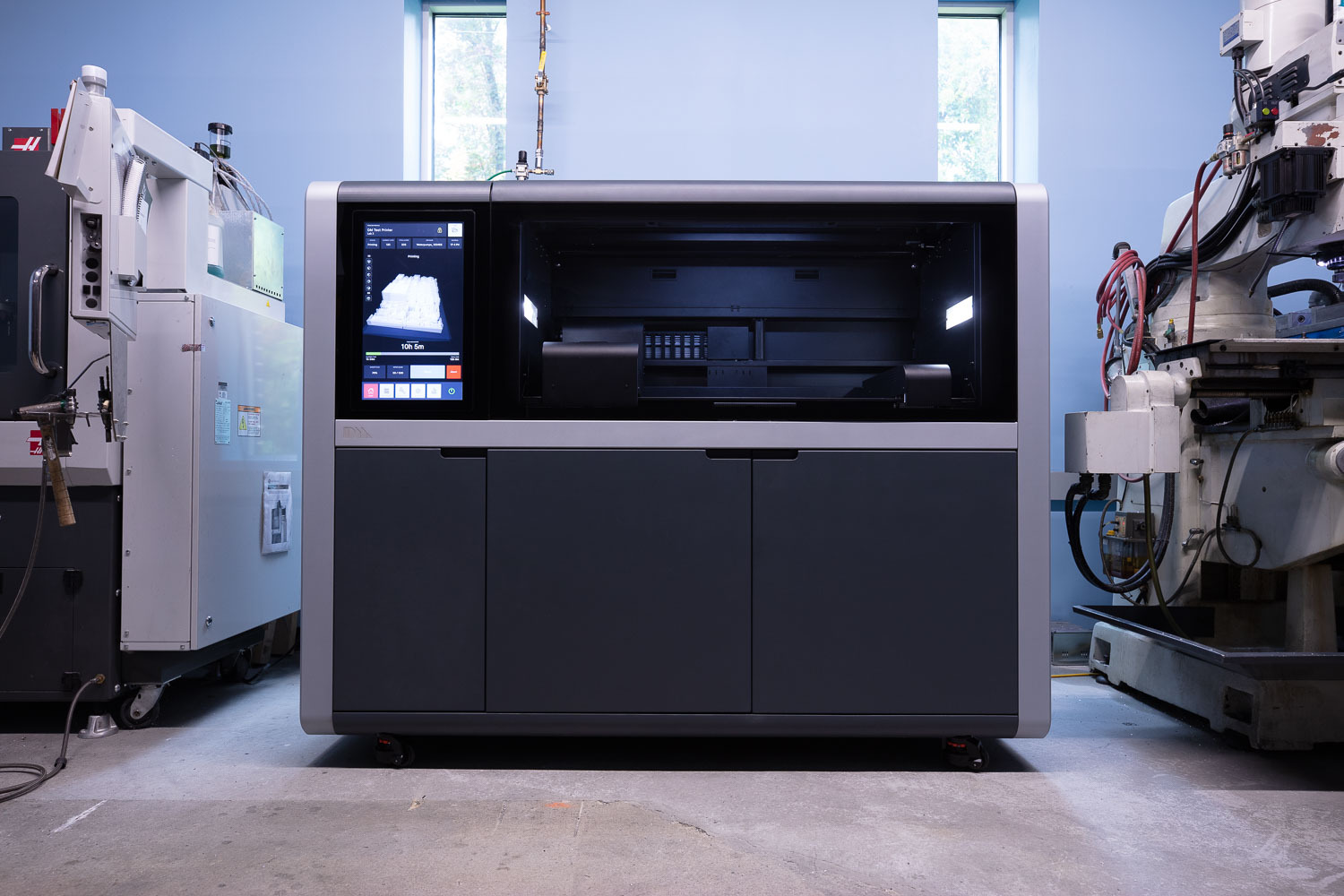
Desktop Metal’s Shop System, an additive manufacturing solution targeted at the machine shop market and designed for mid-volume production of customer-ready metal parts. (Image courtesy of Business Wire)
According to Desktop Metal, the deal will generate up to $575 million in gross proceeds, comprised of Trine’s $300 million of cash held in trust, and $275 million from fully committed common stock PIPE (private investment in public equity) at $10.00 per share. The move is expected to provide, what the company considers, an opportunity to build the “first $10 billion additive 2.0 company,” part of an emerging wave of next-generation additive manufacturing (AM) technologies expected to unlock throughput, repeatability and competitive part costs. With solutions featuring key innovations across printers, materials, and software, Desktop Metal anticipates this new trend to pull AM into direct competition with conventional processes used to manufacture $12 trillion in goods every year.
When consulted, 3DPrint.com’s own Executive Editor and Vice President of Consulting at SmarTech Analysis, Joris Peels, considered the deal to be an aggressive valuation when outlined against the current capabilities, technologies, growth and installed base of the firm. Peels explained that at present, he does not think that the transaction is commensurate with revenues or the perceived quality of its offering.
The expert further suggested that “the firm has consistently overstated capabilities. It has also had significant issues with deploying its technology in the field. Competition from firms such as Markforged, HP, and GE will expand the binder jet market considerably, but also offer alternatives to Desktop Metal. New startups such as One Click Metal, Laser Melting Innovations, Aconity3D and ValCUN can also provide alternative solutions. The low-cost metal market is set for rapid growth. These are the types of systems that we could expect in many a machine shop and factory in the years to come. The opportunity is for over 750,000 deployments worldwide, dwarfing the current market. The battle for dominance in this exciting space will yet see more market entrants arrive and we are in the initial stages of a very exciting time.”
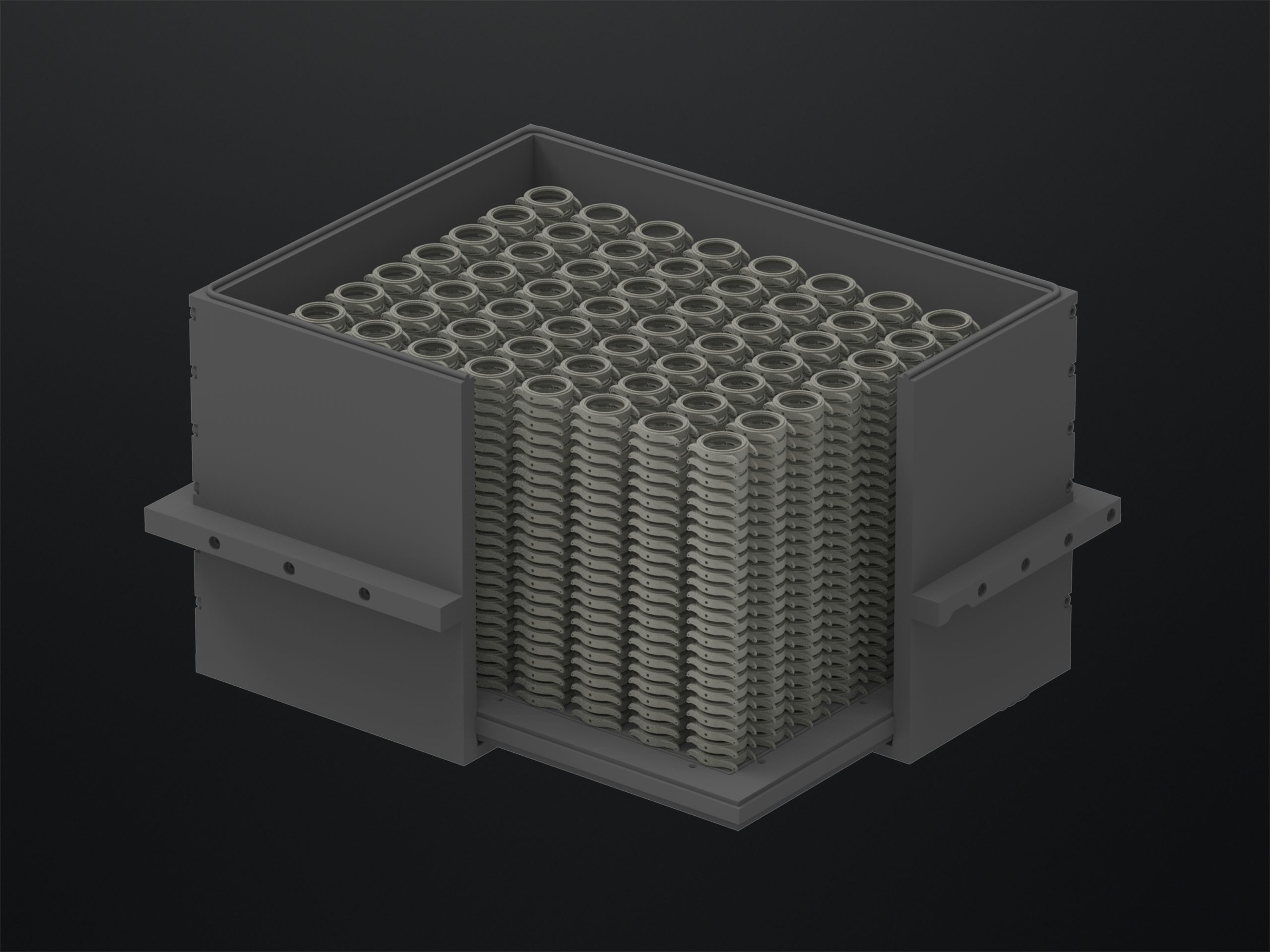
Desktop Metal’s Production System is designed to be the fastest way to 3D print metal parts at scale. (Image courtesy of Business Wire)
During a conference call on August 26, 2020 – just after news of Desktop Metal’s SPAC transaction were revealed – legendary technology investor and operator Leo Hindery, Jr., Chairman and CEO of Trine Acquisitions, said that Desktop Metal will be the “only pure-play opportunity available to public market investors in the additive manufacturing 2.0 space.”
Emphasizing his belief that the company is in the process of revolutionizing the industry, and developing a technology that will be a significant step in replacing mass manufacturing base, which has become antiquated, Hindery said this deal will become pivotal to transforming the products and industries that will drive the economy into the 21st century, including electric vehicles, 5G communications, digital supply chains, and space flight.
Both company CEOs suggested that the AM industry is slated to realize explosive growth over the next decade, reaching over ten times the 2019 market size, estimated to surge from $12 billion to $146 billion by 2030 as it shifts from prototyping to mass production.
To better understand the future of the AM metal industry, 3DPrint.com turned to Scott Dunham, SmarTech’s Vice President of Research, who reported on the market conditions today, stating that nothing changes in business without significant pain first.
“The metal additive manufacturing market in 2020 is feeling a combination of ongoing growing pains with difficulties in the sales environment now intensified due to economic effects from COVID-19. General manufacturing companies facing similar challenges, however, and now are faced with the choice of continuing on with the status quo in light of the pandemic exposing weaknesses in their supply chains, or making serious changes to address those weaknesses in the future. Both choices are fraught with risks,” Dunham suggests. “Metal additive manufacturing market stakeholders are hopeful this scenario may catalyze the industry back to strong growth as companies arrive at a decision to invest in new technologies and further develop their capabilities in concert with AM leaders to arrive better prepared for future challenges.”
Despite the current impasse, Dunham insists that the additive industry will ultimately benefit from a renewed push for cost savings, supply chain independence and agility, and a desire for faster manufacturing. Suggesting that not all will make it through the next two years in metal AM, but those which do will likely build the future of manufacturing that experts have anticipated for some time.
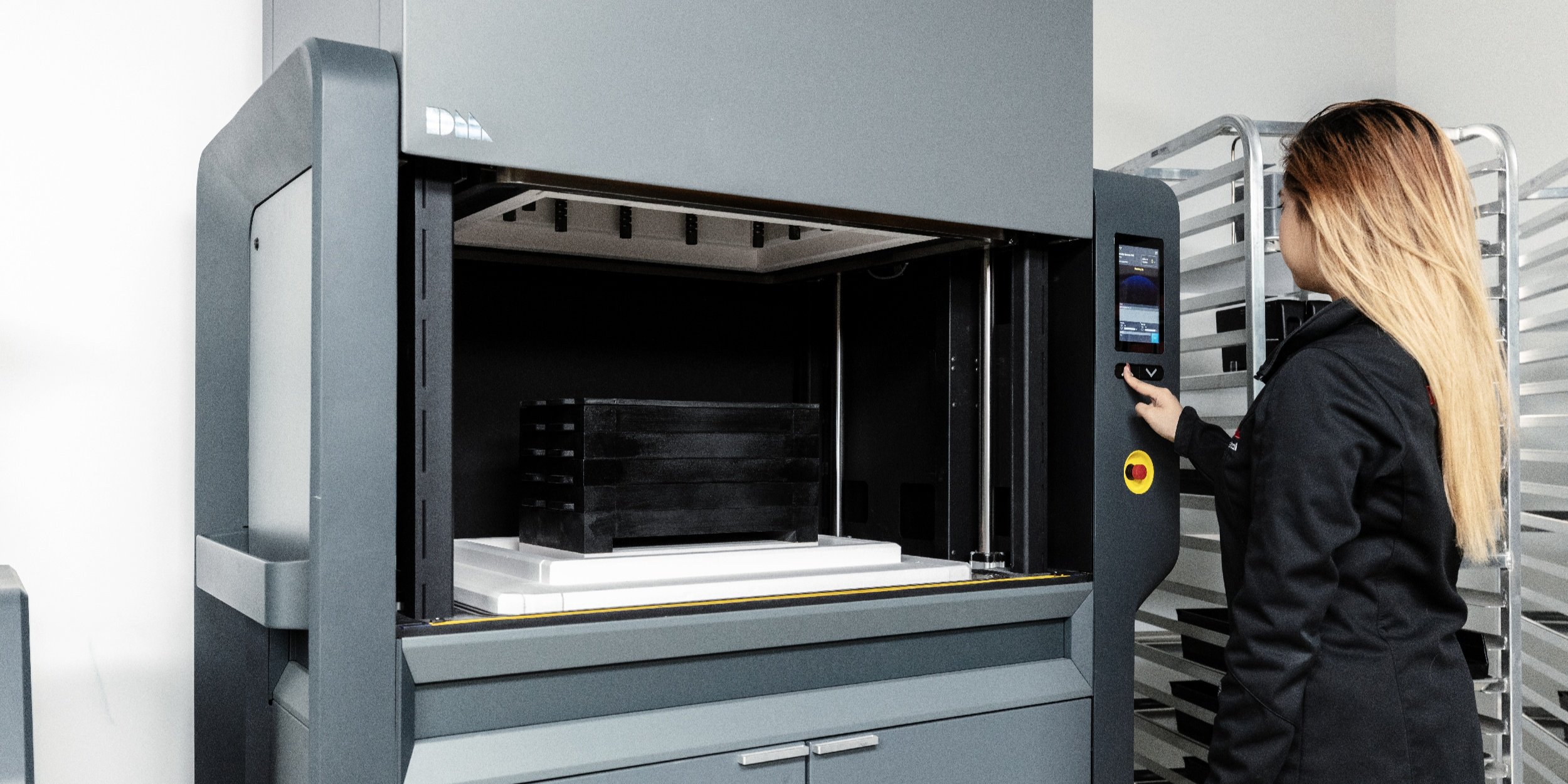
Desktop Metal’s innovative 3D printing metal systems used from prototyping through mass production. (Image courtesy of Desktop Metal)
In a quest to speed up technology development Desktop Metal is moving fast. The proposed business combination is expected to be completed by November 2020 and has already been approved by the boards of directors of the two companies. Once finalized, Desktop Metal will have post-deal cash on hand that will enable accelerated growth and product development efforts, especially as a large portion of the $575 million in gross proceeds from the deal will be dedicated to continuous product innovation and to pursue targeted acquisition opportunities.
The post 3D Printing Unicorn Desktop Metal to Go Public After Reverse Merger Deal appeared first on 3DPrint.com | The Voice of 3D Printing / Additive Manufacturing.
SmarTech’s Metal 3D Printing Powders Report Sees Stalled Growth to $3.7B in 2020
SmarTech Analysis has published the sixth edition of its report dedicated to metal 3D printing powders, “Additive Manufacturing with Metal Powders 2020”, which takes into account the economic challenges and opportunities associated with metal additive manufacturing (AM) in the face of the COVID-19 pandemic. Using what the market research firm calls “a robust market tracking and forecasting dataset” that is provided with the report, SmarTech explores current dynamics in metal AM, both focusing on short-term trends and long-term projections.
The company predicts fewer purchases of metal 3D printing hardware, due to the economic downturn, may be partially offset by opportunities in material and production services resulting from new interest in 3D printing, leading to single-digit growth in these segments. In turn, SmarTech anticipates single-digit growth in metal AM revenue even after the economic issues faced by 3D printing companies. This growth is dependent on firms conducting new market strategies founded on this new interest in overcoming supply chain issues faced during the pandemic, according to SmarTech.
As we have seen, the pandemic has impacted every company in the industry, from 3D Systems and Stratasys to GE and Boeing, but that some firms have been able to weather the storm to some extent. SLM Solutions, for instance, has curiously posted a 90 percent increase in revenue growth over the first half of 2020 compared to last year through an order backlog from 2019 and a careful review of these orders.
SmarTech notes that nearly every firm in 3D printing used AM in a positive manner during the pandemic, either to produce critical components for medical care or to enable the development of new medical products for future events. As a result, 3D printing has come to the forefront of manufacturing once more. At the same time, the market research company points out that the fact that metal AM is heavily tied to powder bed fusion has “raised the collective bar for performance and capability of the technologies, exposing holes in the broader manufacturing landscape in terms of necessary expertise in additive.”
Despite the economic depression that has resulted from the impacts of the virus, new investments were made into metal AM in 2019 and early 2020. While growth has slowed, there have been new business ventures, with SmarTech pointing out that, so far during this time, the emphasis of these projects has been on production services rather than hardware.
An example of this is further investment by one of the world’s largest traders of goods and services, Sumimoto Corporation, in metal 3D printing service provider Sintavia. Despite the pandemic, Sumimoto is pouring more funds into the Florida-based AM company to scale its production for flight-critical parts.
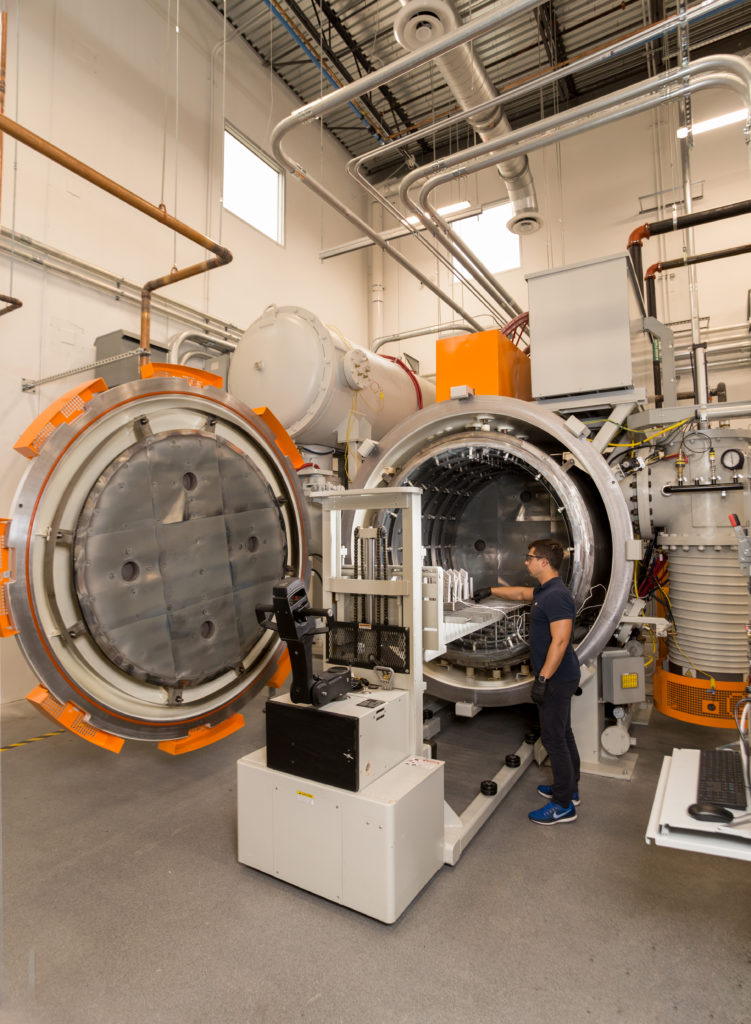
Sintavia is the only company in the world with Nadcap approvals for laser additive manufacturing, electron beam additive manufacturing, and in-house heat treatment. (Image courtesy of Business Wire)
In addition to the new SmarTech report, the report’s author and Vice President of Research for Smartech, Scott Dunham, has recently written a 3DPrint.com PRO article providing some insight into the short-term dynamics of the metal 3D printing powders market. In that article, he notes that metal powders grew significantly in 2019 at a rate of 37 percent, compared to 2018. In the first three months of 2019 alone, as much powder was sold and shipped as in all of 2014 combined. This is driven in part, according to Dunham, by a small group of “AM power users”, such as Stryker, Siemens, and GE, who are using metal 3D printing for series production of important parts.
In other words, though the pandemic is generally slowing economic growth overall, the benefits of 3D printing when successfully implemented are continuing to make their way into general manufacturing. While growth may slow to single digits in the near-term, the long-term outlook for metal AM is bright.
The post SmarTech’s Metal 3D Printing Powders Report Sees Stalled Growth to $3.7B in 2020 appeared first on 3DPrint.com | The Voice of 3D Printing / Additive Manufacturing.
Desktop Metal to go public as a $2.5 billion 3D printing business, raising estimated $575 million in funding
CELLINK acquires precision dispensing 3D printing company Scienion in €80m agreement
Dyndrite Adds Trumpf, Additive Industries, Others to 3D Printing Developer Group
US-based Dyndrite, a solutions provider for next generation hardware and software for additive manufacturing, has added five new members to its Dyndrite Developer Council: Additive Industries, Open Additive, 3D Currax, Photocentric, and Trumpf.
Dyndrite provides tools, resources and community platforms to OEMs, independent software vendors, service providers and educators to leverage its core GPU-based 3D geometry kernel (a pioneering ‘Computational Geometry Engine’), Additive Toolkit (AT), and integrated Python API to develop, access and advance cutting-edge additive solutions, new digital workflows, and best practices. Along with the inaugural members, its current list of 20 members also include 3D Systems, Altair Engineering, AON3D, ANSYS, Aurora Labs, Desktop Metal, ExOne, Impossible Objects, and SLM Solutions.
The company launched its Dyndrite Developer Program and Dyndrite Developer Council in 2019, with HP, Aconity3D, EOS, Plural Additive Manufacturing, Renishaw, and NVIDIA as its inaugural members. Earlier this month, the first council member, HP had announced a strategic partnership with Dyndrite where it would be adopting the Dyndrite platform to develop and scale next generation digital manufacturing software solutions. In June, we had also reported on the Digital Manufacturing Investor Day hosted by Dyndrite Corporation to support companies (such as Authentise, CASTOR, Essentium, Gen3D, Exlattice, Impossible Objects and more) in bringing new innovations to market, despite the untoward impacts of the pandemic.
“Photocentric is excited to be a part of the Dyndrite Developer Council. Additive Manufacturing is entering a new era and we are delighted with the opportunity to collaborate using cutting edge software and innovative technologies to help expand the possibilities for scalability and the mass manufacture of 3D parts,” said Nikita Chibisov, Software, Photocentric.
“Open Additive and Dyndrite share a vision for a more open future for the AM industry, in which users have more accessible and powerful tools to accelerate innovation’ said Ty Pollak, President, Open Additive. “We’re excited by the potential impact of our complementary hardware and software capabilities to increase productivity and quality of metal AM parts.”
“A strong industry has to have modern, robust standards,” said Mark Vaes, CEO/CTO of Additive Industries. “As a provider of industrial solutions for metal additive manufacturing, we are joining the Dyndrite Developer Council in part to be active in creating a new set of standards that deliver the productivity, efficiency and automated workflows that our customers need.”
“TRUMPF is excited to join the Dyndrite Developer Council. As a pioneer in additive manufacturing as well as laser specialists we are always looking to implement the latest technologies,” said Ilona Heurich, Head of R&D Software HMI, TRUMPF. “We are excited to see how the Dyndrite GPU accelerated geometry kernel can help to maximize process performance and further strengthen the power and scalability of the AM industry.”
To transform productivity in AM, Dyndrite used a First Principles approach to develop a next generation GPU-powered geometry kernel for design and manufacturing, to bring efficiency, economy and integration between computer and 3D printer software and digital workflows. The last such geometry kernels were developed in the 80’s and 90’s, and since then there’s been little innovation to change this. Dyndrite’s GPU-based geometry kernel solution is a much-needed innovation for advanced manufacturing today, and is able to reduce processing times from days to seconds, and compress terabytes of model information to kilobytes. It could be the next generation platform that AM design to manufacturing workflows needed—and could potentially do what Adobe did for 2D printing, decades ago.
The post Dyndrite Adds Trumpf, Additive Industries, Others to 3D Printing Developer Group appeared first on 3DPrint.com | The Voice of 3D Printing / Additive Manufacturing.
3D Printing Service Bureau Voodoo Manufacturing Closes Permanently
“Please continue dreaming, imagining, designing, and making new things.” – The Voodoo Manufacturing Company
Millions of lives have been affected as the COVID-19 pandemic has ravaged the world. Unfortunately, catastrophic health scares usually breed financial devastation too. As unemployment has wreaked havoc on millions of household budgets in just the US alone, businesses of every size are suffering as well.
 The latest casualty within the 3D printing space is Voodoo Manufacturing. This may come as a huge surprise as they were considered to be a shining star in their niche, rising quickly to become one of the world’s largest high-volume 3D printing farms.
The latest casualty within the 3D printing space is Voodoo Manufacturing. This may come as a huge surprise as they were considered to be a shining star in their niche, rising quickly to become one of the world’s largest high-volume 3D printing farms.
Here is an excerpt from their recent announcement upon closing:
“Dear Voodoo Manufacturing community,
It’s with a heavy heart that we announce that Voodoo Manufacturing has permanently closed its doors.
COVID-19 was challenging for everyone, but we tried to continue going. We repurposed our factory to make PPE in order to help fight the pandemic and through donations and individual purchases, we were able to distribute more than 15,000 protective face shields across the U.S. Unfortunately, without a clear end to the current health crisis, Voodoo Manufacturing couldn’t make it to the other side….”
Now, we come full circle in reporting on the Brooklyn, NY-based startup, from their opening in June of 2015 to their recent sign-off just a little over five years later. In that short amount of time, there was considerable news to share as the small but dynamic company—founded by a group of engineers who previously worked at MakerBot—ascended. From beginning to end, their intent was notable in terms of continually working to bring affordability and accessibility to potential users via a refreshing business model based on fast 3D printing services with low overhead—and low prices.
The past five years marked collaborations with other companies, both big and small. Right out of the gate, business was thriving. Numerous projects were highlighted; for example, they collaborated with Autodesk and e-NABLE Community Foundation, acting as the largest donor for 3D printed prosthetics sent to kids in developing countries. Industry leaders like Autodesk, Microsoft, and Mattel also served as customers. Upon receiving $1.4 million in seed funding from investment company KPCB Edge, they were able to expand further in terms of their facility, 3D printers on hand, and doubling their team from nine to eighteen.
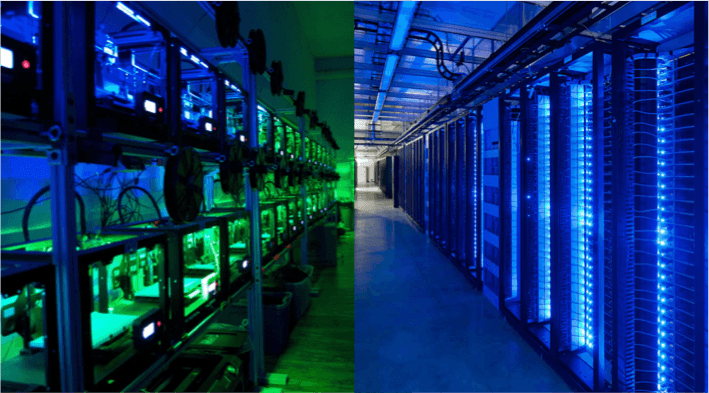
Voodoo Manufacturing’s 3D printer farm
Voodoo continued to grow rapidly, releasing Project Skywalker, a fully functional, robot-operated 3D printer cluster in 2017. The next year, their team launched Fulfilled by Voodoo (FBV), a 3D printing fulfillment service mean to encourage entrepreneurs to open online businesses. Overall, success continued for the service bureau while the industry continued to become more competitive.
Fast forward to 2020, however, and all bets were off (pretty much for everyone) as the COVID-19 pandemic halted lives—and businesses. The Voodoo team explains that they kicked into action 3D printing personal protective equipment (PPE), and distributing 15,000 face shields around the US. They re-designed their 3D printing service bureau factory and continued on due to donations and purchases, but quickly became apparent that they would not “make it to the other side.”
Small businesses within the US have been especially vulnerable during these strange and challenging financial times, but as they falter in the droves, the economy is affected substantially; in fact, as a whole, the US business sector and economy are reliant on small businesses as they are cumulatively the largest employer of workers.
For thousands of commercial endeavors, however, no matter how hard they work to keep up with new regulations after COVID or scramble into new directions to please existing or new customers, such enormous financial damage has occurred that closings have been and will continue to be inevitable.
[Source / Images: Voodoo Manufacturing]
The post 3D Printing Service Bureau Voodoo Manufacturing Closes Permanently appeared first on 3DPrint.com | The Voice of 3D Printing / Additive Manufacturing.



